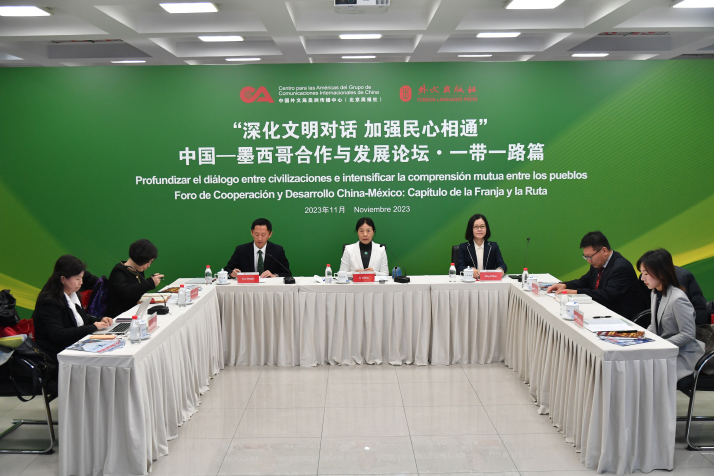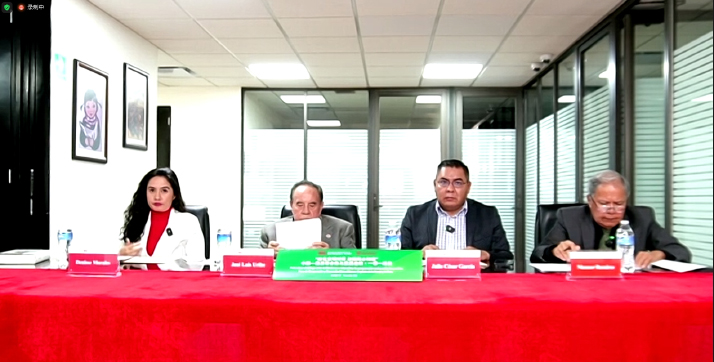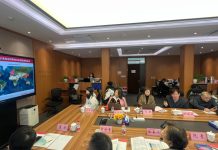
China’s connections with the Latin American region trace back to the 16th century, facilitated by marine trade routes that enabled the exports of Chinese silk, porcelain and lacquerware to Mexico.
In The Silver Way: China, Spanish America and the Birth of Globalization, 1565-1815, authored by Peter Gordon, editor of the Asian Review of Books, and Juan José Morales, former President of the Spanish Chamber of Commerce in Hong Kong, it is revealed Spanish dollars minted in Mexico served as “the first global currency that supported trans-Pacific trade.”
In 1972, China and Mexico established diplomatic ties. The friendship between the two countries has since grown stronger over time.
This year marks the 10th anniversary of both the establishment of the China-Mexico comprehensive strategic partnership and the Belt and Road Initiative (BRI). The China-proposed initiative aims to boost connectivity along and beyond the ancient Silk Road routes.
Against this backdrop, the China-Mexico Cooperation and Development Forum: Belt and Road Chapter, co-hosted by the China International Communications Group (CICG) Center for the Americas and the Foreign Languages Press, took place online and in person in both Beijing and Mexico City on November 28. Participants from China and Mexico shared their thoughts on cultural and people-to-people exchange.
A common dream
“The bond between the two peoples is getting stronger,” Chinese Ambassador to Mexico Zhang Run told the forum. “Throughout my tenure as China’s ambassador to Mexico over the past 10 months, I have visited more than 10 Mexican states and cities. What I’ve heard the most is a strong desire for Mexico to seize the opportunities arising from Chinese modernization and the BRI. There is a consensus to collaborate with China instead of decoupling.”
Zhang stressed that both countries need to draw insights from each other’s rich civilizations and development experiences. In doing so, they can unlock greater potential for cooperation to advance bilateral relationship, he added.
Li Yafang, President of the CICG Center for Americas, noted that the achievements of China and Latin American and Caribbean (LAC) countries in Belt and Road cooperation hold valuable lessons for the continued development of China-Mexico relations.
At present, China is actively pursuing modernization with its own characteristics as part of its national rejuvenation, according to Li. China’s goal is not self-centered modernization, but rather the pursuit of modernization together with other countries, especially those in the developing world. Meanwhile, Mexico is charting its own course of modernization as its people strive for a better life. “In this quest, China and Mexico share a common dream,” Li said.
China and Mexico are developing countries in similar stages of development, sharing similar developmental challenges, Zhao Kejin, Deputy Dean of the School of Social Sciences of Tsinghua University, said.
“There’s no one-size-fits-all recipe for achieving modernity,” Zhao stressed, adding it is crucial for China and Mexico to strengthen exchange on national governance and South-South cooperation. This will ensure a stronger connection between the two peoples and societies, facilitating partnership between the two nations, according to him.
Multi-faceted connection
Ding Zhitao, Deputy Editor in Chief of the Foreign Languages Press, said at the forum that in the process of jointly advancing Belt and Road cooperation, different forms of people-to-people exchange between countries and regions continue to deepen and present a colorful vision.
She said book translation and publication, as important carriers and manifestation of cultural exchange, play an irreplaceable and fundamental role in and has a lasting impact on promoting cultural interaction, mutual understanding and people-to-people connectivity among BRI countries.
Chen Yuanting, Secretary General of the Mexico Research Center at the Latin America Research Institute of the Chinese Academy of Social Sciences, emphasized the pioneering role think tanks play in boosting dialogue and cultural exchange between the two countries. “In the future, a mechanism across multiple channels and tiers should be created to involve more think tanks in mutual learning,” she said.
Over the past decade, telling the stories of Belt and Road cooperation and promoting common development and prosperity have become a shared responsibility among the media organizations of partner countries, CGTN Spanish anchor Deng Ying told the forum. “Media exchange and cooperation have also enhanced mutual understanding among nations and deepened friendship and mutual trust,” she said.
José Luis Uribe, President of Club Primera Plana, Mexico’s oldest media organization, echoed Deng’s remarks, saying the BRI Journalists Cooperation Platform has been nurturing collaboration since its establishment in 2018. The platform aims to lift mutual understanding and friendship among journalists from more than 100 countries.
“When I was teaching at university, I exchanged ideas with my students and explained to them the position and importance of China in the contemporary world. Now, in my retirement, I persist in spreading and defending the idea that the world is progressing and the future is bright,” Nicanor Ramirez, a Mexican reader of China Hoy, the Spanish-language monthly magazine published by the CICG Center for Americas, for 50-plus years, told the forum.

Mexico City-based guests attend the China-Mexico Cooperation and Development Forum: Belt and Road Chapter online on November 28 (CICG AMERICAS)
BRI benefits both
Both Ehécatl Lázaro Méndez, a researcher with the Mexican Center for Economic and Social Studies, and Julio César García, Director of Channel 6 TV (Mexico), said they believe Mexico’s inclusion in the BRI is crucial. They called on developing countries to explore their respective paths toward modernization.
“Multilateralism is a fundamental element in the initiatives China has put forward on the international stage. The BRI was the first of these (initiatives),” Denisse Morales, President of Global Diplomacy Leadership Actions for Empowerment, said at the forum.
“The BRI has established global connections through infrastructure and trade, reshaping the dynamics between developing countries and the international cooperation system. It has brought about transformative changes for both China and the world,” Morales pointed out.
The construction of the Mombasa-Nairobi Railway has driven Kenya’s annual economic growth by 2 percent. The Jakarta-Bandung High-Speed Railway cut the journey between the two Indonesian cities from 3.5 hours to 40 minutes. Over the past decade, China and Mexico have supported each other on issues concerning core interests and major concerns. According to the General Administration of Customs of China, bilateral trade was approaching $100 billion as of late 2022, with cooperation highlights in infrastructure, automobiles and renewable energy.
“The spillover effect of Chinese modernization is boosting other countries’ development,” Liu Ying, a researcher at Chongyang Institute for Financial Studies, Renmin University of China, told the forum.
“Through the China-Mexico Cooperation and Development Forum, we aspire to continually expand the depth and breadth of multifaceted exchanges between media organizations and think tanks of both nations. By fully tapping into the potential for collaboration, we aim to contribute to strengthening bilateral partnership, facilitating the exchange of governance experience, fostering mutual learning in cultural exchange, and advancing China-Mexico relations,” Gao Dingbo, Associate President of the CICG Center for Americas, said. –The Daily Mail-Beijing Review news exchange item





